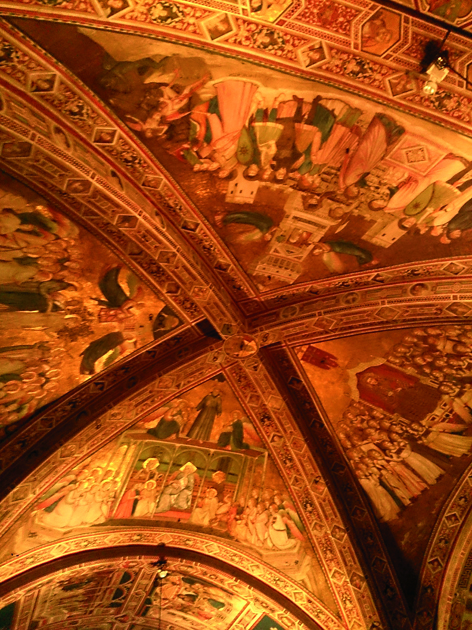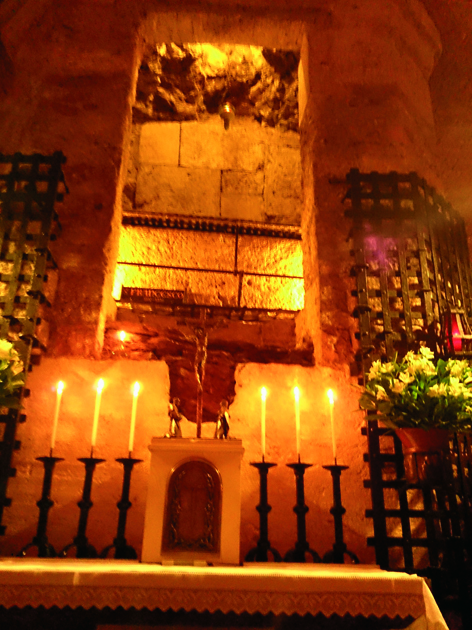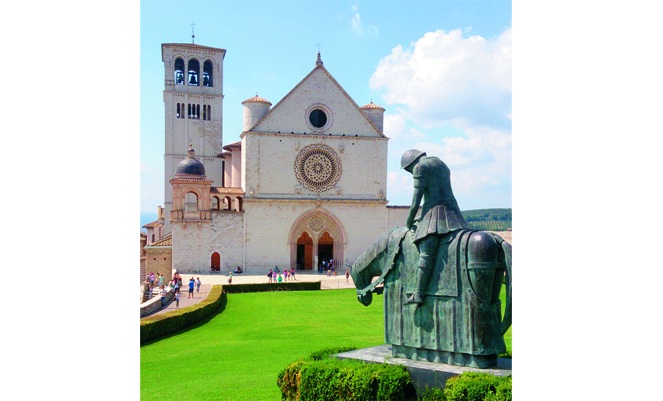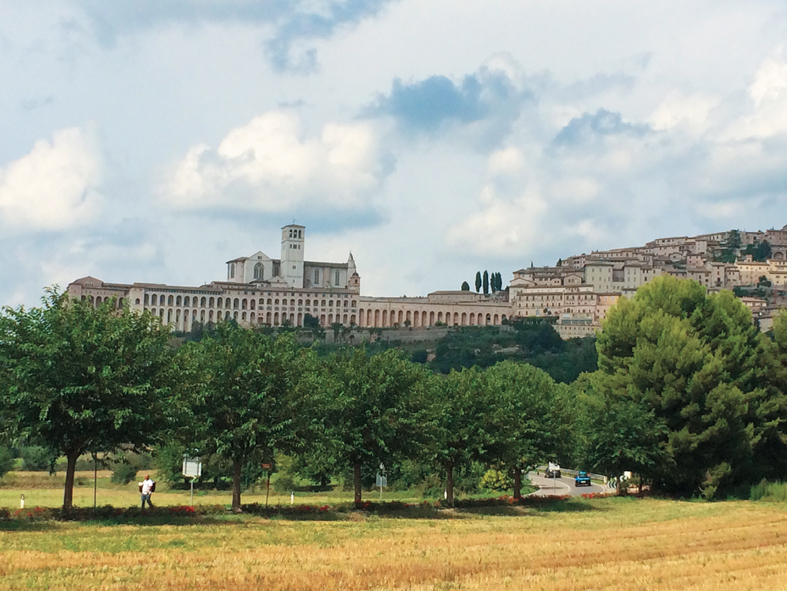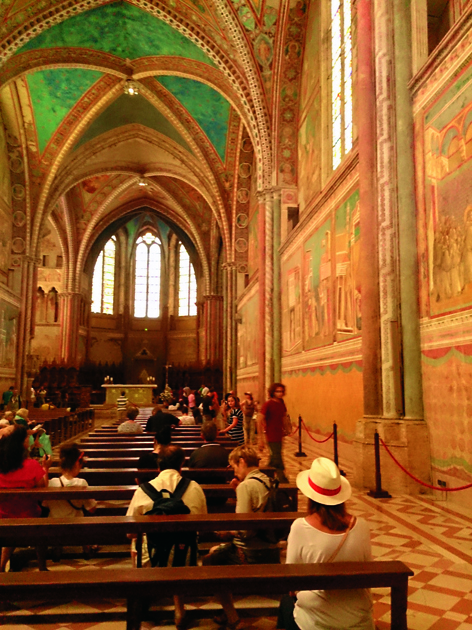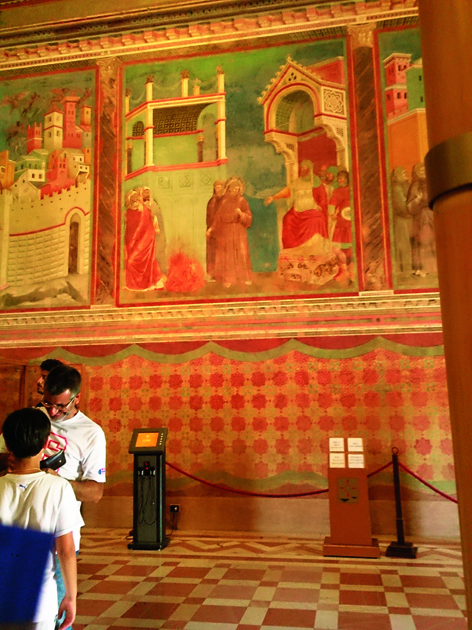Prestige issue 257-258, Dec-Jan. 2014-2015
By advocating austerity, humility, manual work and evangelization, St. Francis of Assisi inspired the current Pope Francis to take his name and preach the same beliefs as those of the Saint.
© Prestige
Simple and harmonious, the facade of the Basilica of St. Francis hides on the inside treasures of art. A large rose window illuminates the upper church. The lower church, more obscure, is built into the side of a rock. The shrine attracts every year millions of tourists.
Until today, his name evokes the consciousness of Christianity. St Francis of Assisi was born into a middle-class family where he grew in abundance and recklessness. He dreamed of becoming a knight, joined the army and was taken prisoner. Back in Assisi, he suffered a depression and turned to God. He then discovers the injustice, the misery of the poor, the lepers … In his prayer he heard Christ say, “Francis, repair my house which is falling apart.” François sells the goods of his father to repair churches. Furious, his father drags him to justice. François gave him back his money, got separated from his friends, all that he has, and naked before the crowd said goodbye to his father that he is leaving for another Father who is in heaven. The bishop immediately covers him with his cape. Since then, his only garment is a simple tunic held at the waist by a rope as a belt. He devotes his life to help the poor, the sick, the animals. The followers grow the circle and his small community quickly became a recognized religious order, the Franciscan order in Assisi, that became city of the Saints. Two years before his death in 1226. St. Francis was marked by the stigmata of Christ’s passion. In 1228, he was canonized by Pope Gregory XI.
© Prestige
The Convent and St Francis’ Basilica were built in 1228, two years after the saint’s death. On the right the town of Assisi built of stone. A simple and wonderful panorama, that invites to peace and serenity.
The piety and devotion of St. Francis have also attracted women. Chiara di Favarone, 18, from a noble family, ran away and joined St. Francis. She founded a new monastic order, the Order of Poor Clares. St. Clair ran for 40 years the Order of Poor Ladies, she founded among other monasteries in Bruges, Belgium, which attracts floods of tourists coming to discover the famous Bruges lace, handmade work until today by the nuns of the convent. St. Clair died in 1253 in poverty and joy.
The Basilica of St. Francis
a colossal masterpiece
© Prestige
The upper church with Giotto frescos, depicting the life of St. Francis.
Who would have imagined that the basilica, so simple from the outside would contain as much splendor as the famous Giotto frescos on the life of St. Francis?
The imposing Basilica in Assisi, Italy, is actually composed of two superimposed churches, built between 1228 and 1253. Listed since 2000 as a World Heritage Site, this grandiose religious building that has made Assisi a fundamental reference of the artistic and architectural development of Italy, preserves the relics of Saint Francis, the child of the city.
© Prestige
The upper church. A fresco by Giotto showing St. Francis who has a vision, foretelling a great seat in heaven. Another fresco by Giotto depicts him chasing the devil.
In the gothic style, the upper basilica is luminous in its unique nave. The visitor is immediately enamored by the splendor of art. Initially it is the great painter Cimabue who is in charge of the decoration of the upper church. Fulfilling other obligations, Cimabue leaves Assisi. Giotto, one of his apprentices, aged between 10 and 14 years, remains on the site. After a trip to Rome where he was trained, he joined his master on the largest Italian site. His skills and the quality of his work are quickly noticed. He became the works master asked by the Franciscans for the decoration of the basilica. He was entrusted with the 28 frescoes of Assisi, on both sides of the nave, which tell the life of St Francis. Other paintings by great masters such as Cimabue, Cavallini, Martini, Lorenzetti decorated the basilica. These representations contain all the Italian painting from the XIIIth century.
